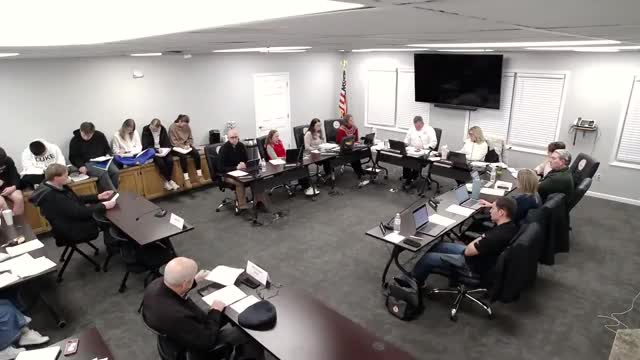District auditor reports clean FY2025 financial audit; federal single-audit still pending
November 11, 2025 | Effingham CUSD 40, School Boards, Illinois
This article was created by AI summarizing key points discussed. AI makes mistakes, so for full details and context, please refer to the video of the full meeting. Please report any errors so we can fix them. Report an error »

An auditor for Effingham CUSD 40 told the school board the district’s FY2025 financial statements are in order but that a federal compliance review remains incomplete.
"We are happy to say that we have found everything in compliance," auditor Doug said, summarizing the financial-statement portion of the audit. He explained the audit was prepared on a cash basis and that the Office of Management and Budget had not finalized federal program audit guidance, so the district’s report excludes the federal single-audit section for now.
Doug told the board that expenditures across the district’s four major funds exceeded receipts by "over $3,000,000, almost $3,200,000," with most of that shortfall concentrated in the education fund. He described two main drivers: the timing impact of converting the district’s employee health insurance from a self‑funded plan to commercial coverage (which he estimated added about $1 million in FY2025 costs as previously unpaid claims were processed) and the expiration of large COVID‑era ESSER grants that had previously paid for positions and technology.
The audit also highlighted other items that contributed to the operating loss. The Little Hearts Daycare (Fund 11) showed a roughly $160,000 shortfall, in part because grant reimbursements and other timing differences were not reflected at the June 30 closing. Doug said those timing issues may reverse in FY2026 and that he expects improved results next year, particularly because the health‑insurance timing issue is not expected to recur.
On the district’s fiscal-profile metrics, the auditor reported an ISBE financial-profile score of 3.35 (down from recent years) and days-of-cash on hand of 179.73, narrowly short of ISBE’s 180‑day threshold. Doug noted how sensitive those metrics can be to timing: a July debt repayment completed just after June 30 affected the report’s presentation.
Board members asked clarifying questions about where the district’s hands-on contributions to health benefits appear in the numbers; Doug pointed to the significant-expenditures section and confirmed the board’s one-time contribution is reflected in the salary/benefit totals. Board members also asked about statewide trends; Doug said many districts are seeing 10–15% increases in premiums and other cost pressures.
After the presentation, the board voted to accept the FY2025 audit as presented. "I would be happy to field any questions," Doug told the board before departing. The board’s acceptance was recorded by roll call with the motion carried.
"We are happy to say that we have found everything in compliance," auditor Doug said, summarizing the financial-statement portion of the audit. He explained the audit was prepared on a cash basis and that the Office of Management and Budget had not finalized federal program audit guidance, so the district’s report excludes the federal single-audit section for now.
Doug told the board that expenditures across the district’s four major funds exceeded receipts by "over $3,000,000, almost $3,200,000," with most of that shortfall concentrated in the education fund. He described two main drivers: the timing impact of converting the district’s employee health insurance from a self‑funded plan to commercial coverage (which he estimated added about $1 million in FY2025 costs as previously unpaid claims were processed) and the expiration of large COVID‑era ESSER grants that had previously paid for positions and technology.
The audit also highlighted other items that contributed to the operating loss. The Little Hearts Daycare (Fund 11) showed a roughly $160,000 shortfall, in part because grant reimbursements and other timing differences were not reflected at the June 30 closing. Doug said those timing issues may reverse in FY2026 and that he expects improved results next year, particularly because the health‑insurance timing issue is not expected to recur.
On the district’s fiscal-profile metrics, the auditor reported an ISBE financial-profile score of 3.35 (down from recent years) and days-of-cash on hand of 179.73, narrowly short of ISBE’s 180‑day threshold. Doug noted how sensitive those metrics can be to timing: a July debt repayment completed just after June 30 affected the report’s presentation.
Board members asked clarifying questions about where the district’s hands-on contributions to health benefits appear in the numbers; Doug pointed to the significant-expenditures section and confirmed the board’s one-time contribution is reflected in the salary/benefit totals. Board members also asked about statewide trends; Doug said many districts are seeing 10–15% increases in premiums and other cost pressures.
After the presentation, the board voted to accept the FY2025 audit as presented. "I would be happy to field any questions," Doug told the board before departing. The board’s acceptance was recorded by roll call with the motion carried.
View full meeting
This article is based on a recent meeting—watch the full video and explore the complete transcript for deeper insights into the discussion.
View full meeting
